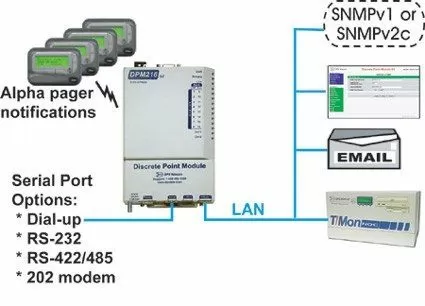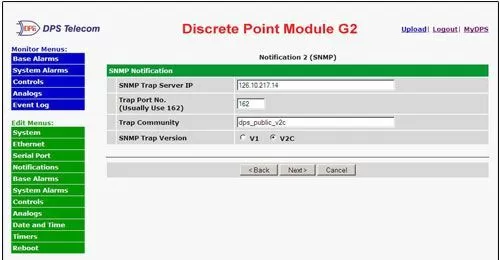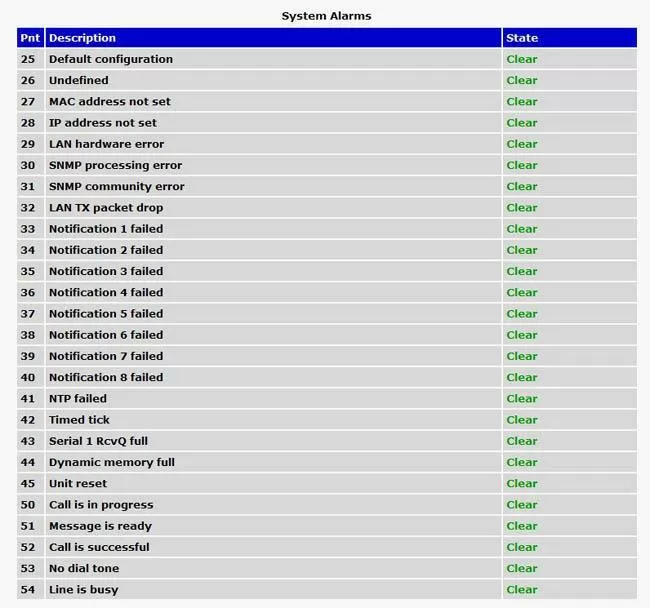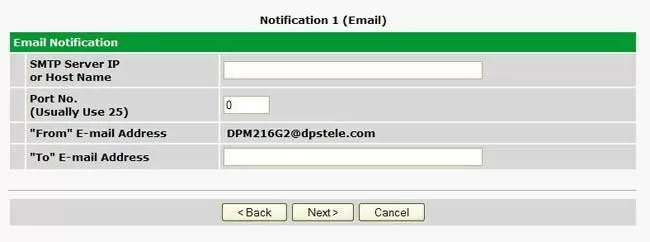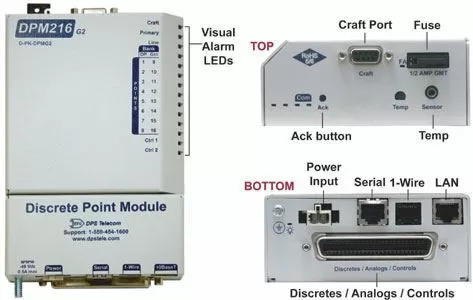Check out our White Paper Series!
A complete library of helpful advice and survival guides for every aspect of system monitoring and control.
1-800-693-0351
Have a specific question? Ask our team of expert engineers and get a specific answer!
Sign up for the next DPS Factory Training!

Whether you're new to our equipment or you've used it for years, DPS factory training is the best way to get more from your monitoring.
Reserve Your Seat Today The DPM provides 2 control points and 16 discrete alarms.
The DPM provides 2 control points and 16 discrete alarms. Monitor and control your critical equipment 24/7 no matter how distant, isolated, or hard to reach your equipment might be. The Discrete Point Module (DPM) is a compact, self-contained, alarm system for reliable monitoring wherever it can be placed. Whether it is for cell towers, refrigeration units, or agricultural usage, the DPM will be able to monitor it all. Even with its small size, the DPM is full of features such as easy configuration through a web browser interface, email notifications, and text message notifications. Alarms from the DPM can be reported directly to an alpha pager. Multiple DPMs will be able to report to the T/Mon NOC for centralized alarm monitoring. Get the budget friendly DPM today for your remote monitoring needs.
Built for small-site locations, the DPM is hassle free by being small in size while providing features that are usually found in larger remote telemetry units.
Configuring the DPM for features like email notification and custom alarm point description is easy with the new built-in web browser interface. The web interface is fast, convenient, and provides monitoring capabilities to make the DPM, a reliable, self-contained alarm monitoring system. From the web interface, you will be able to monitor alarm statuses and operate control relays right from the web. You will also be able to access other features from web interface. These features includes, but are not limited to, sending SNMP traps as well as text message notifications to cellular phones, pagers, and PDAs.
The DPM has an optional build configuration that will include either an internal temperature sensor or an external temperature sensor to go along with the DPM. Both of the internal and external temperature sensors can also be included with the DPM. The internal temperature sensor will be installed inside the DPM unit with a half-moon cutout to let it the sensor poke out a tiny bit from the unit. This internal temperature is meant to monitor only the internal temperature of the DPM unit. It is not mean to measure the environmental temperature around the unit itself. For external temperature monitoring, the external temperature sensor features a stereo jack that can be plugged into the DPM unit's back stereo input. No special settings is needed to get the external temperature sensor working. It will just work when it is plugged in. Easy and simple. The external temperature sensor can then be placed in an optimal location in order to measure the environmental temperature. The length of the external temperature sensor's cable can be changed depending on your needs. Whether you need 3 feet, 5 feet, or 50 feet, DPS Telecom can accommodate to get you the cable length that you want.
The DPM now comes standard with a built-in web interface. The intuitive web interface will increase productivity and make alarm monitoring with the DPM much more user-friendly. Configuring the DPM will be a breeze with the web interface. You will no longer have to worry about how you are going to configure the DPM. All you need is a modern web browser and a connection to the DPM to be able to access the built-in web interface.
The web interface for the DPM provides a number of useful features. You will be able to monitor and edit various alarms and settings. The web interface is split into two different sections. The monitor section is designed just for monitoring and nothing else. The monitor section will allow you to view information about Base Alarms, System Alarms, Controls, Analogs, and Event Log. No edits to the alarms or settings can be made from there. The edit section is much more interesting when compared to the monitor section. From the edit section, you will be able to adjust alarms and make changes to the DPM. You will be able to edit System, Ethernet, Serial Port, Notifications, Base Alarms, System Alarms, Controls, Analogs, Date and Time, Timers, and Reboot. From the various edit sections, you can set up email notifications or reboot the DPM.
All contact closure devices such as equipment with Mj/Mn alarms, tower lights, back-up power systems, doors, fire and flood detection can be monitored with the DPM.
DPMs in barns or outbuildings will notify you of unauthorized entry, extreme temperature, fire, low water pressure and pump operation. With the built-in web interface, you can simply browse to the unit's IP address and login to operate door locks, security lights and more.
Monitor freezer doors, temperature sensors, and power lines to warn you of problems before they cause significant losses.
The DPM can also be used to monitor smoke and sprinkler alarms, as well as door and window entries to protect your people and equipment.
Common How-To.Send Email Notifications.
Email notifications can be set through the web interface. From the web interface, click the System button in the Edit menu and then enter a valid email address into the "From" field. This will be the address that will appear as the sender in the notifications. Once you have done that, click the Notifications button in the Edit menu. Start the setup "wizard" by clicking the notification number you would like to use for the email notification. The DPM supports up to 8 configurable notifications. At the "Notification Settings" screen, enable the notification by checking the "Enable Notification" check box if it was not already checked. Afterwards, select the "Send Email Notification" option and then click the Next button to get to the "Schedule" screen. You can use the "Schedule" screen to customize what time and day you would like to receive the notification. Click the Test button to check if the notification settings has been configured correctly. Click the Finish button once you are done. Before the email notification will work as it is intended, you will need to associate the notification to an alarm. When the notification has been associated with an alarm, your email notification has been set and you will be able to receive alarm notifications regarding that alarm point.
Send Text Messages To Cellular Phones.
If your DPM has the optional 33.6k internal modem installed then you will have full support for alphanumeric paging. This means that you will be able to automatically send detailed notifications to alphanumeric pagers, cell phones, and PDAs. To set up the notification, click the Notification button in the Edit menu. Click on the notification number to start the setup "wizard" so that you can configure that notification. Check "Enable Notification" if it was not already checked. Select the "Send Alpha Notification" option and then click the Next button. On the "Alpha Notification" screen, enter the phone number for the pager, leave the "Dial Init String" area blank, and then enter a PIN for TAP terminal authentication. Click the Next button to go to the "Schedule" screen. On the "Schedule" screen, you can set the time and day that you would like to receive this notification. Click the Test button to make sure your notification has been set properly. Click the Finish button when you are done setting up the notification. You will now need to associate the notification with an alarm. Once the notification has been associated with an alarm point, you will be able to receive notifications regarding that alarm.
To receive a price quote or ROI analysis...
Call 1-800-693-0351.
